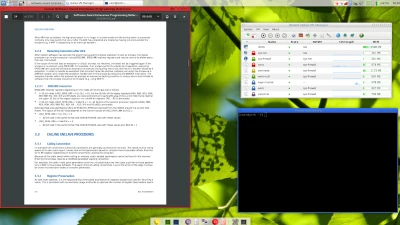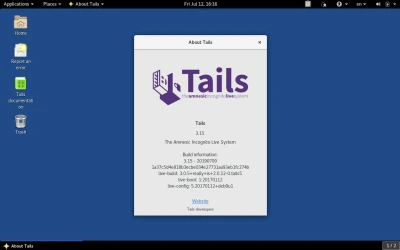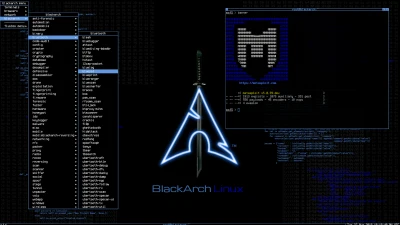
Privacy and security have never been more important—or more under threat. With headlines constantly reporting data breaches, hacks, and the unchecked collection of sensitive personal information, it’s easy to feel like your digital life is always at risk.
However, there’s a silver lining for Linux users: experts widely agree that Linux is a highly secure OS—arguably the most secure OS available.
That said, not all Linux distributions are created equal. While every distro benefits from the inherent strengths of Linux, some go the extra mile in safeguarding your privacy and security. From those designed for enterprise-grade reliability to others explicitly built for anonymity, there’s a distro tailored to meet your needs.
We’ve explored some of the best specialized secure Linux distros, including insights from their developers, to help you navigate the options. Whether you’re focused on advanced security frameworks, protecting personal data, or simply locking down your system, this guide will help you choose the Linux distro that fits your priorities and gives you confidence in your digital security.
Linux Security in 2025: Key Vulnerabilities and Solutions

When it comes to security, Linux users undoubtedly fare better than their Windows or Mac-using counterparts. Linux offers inherent security advantages over proprietary OSes due to its diversity, flexibility, transparency of its open-source code, and role as a foundation for open-source intelligence tools.
Distributions like Rocky Linux remain secure, RHEL-compatible options for users seeking enterprise-grade reliability in 2025.
Thanks to its community-driven nature, security issues are caught and fixed quickly. Security technical implementation guides, like the DISA STIG, now support benchmarks for RHEL 9, ensuring compatibility with modern distributions like Rocky Linux. These guides provide clear security standards for users to follow, enhancing system resilience.
Tools like the DISA STIG, on the other hand, give you a solid framework for finding and managing these security gaps yourself. Along with its secure open-source roots, Linux's diversity within environments, the high level of configurability and control it provides sysadmins with features built into the kernel, such as SELinux and AppArmo, and the high level of security it offers also helps defend against attacks.
In this sense, Linux is, in many ways, secure by design. Implementing reliable backup Linux solutions is another crucial step in maintaining system resilience.
Although attacks targeting Linux systems are on the rise due to its relatively small user base, Linux is still a relatively unpopular target among malware operators and malicious hackers. Most malware still targets Windows, but the growing adoption of Linux in cloud and IoT environments has made it a target in 2025. Attackers increasingly exploit kernel vulnerabilities and IoT-specific malware to compromise Linux systems.
Top Reasons to Choose Secure Linux Distros Like Rocky Linux
Switching from a proprietary OS to a Linux distro like Ubuntu, Fedora, or Debian is an excellent step for privacy and security. In 2025, alternatives like Rocky Linux will continue to offer robust RHEL-compatible solutions, delivering enterprise-grade reliability and scalability for modern applications.
If you really want to take things up a notch, implementing a security technical implementation guide ensures your system is locked down to meet top security standards. Secure Linux distros are built to focus on security, privacy, and anonymity. Understanding Linux distributions can help users choose the best option for their needs.
Adding the DISA STIG into the mix makes sure your system lines up with well-established security standards, giving you extra peace of mind. Many of them incorporate Tor technologies and offer an impressive selection of hacking, pentesting, and digital forensics tools.
As you can imagine, these characteristics and resources are invaluable when assessing an organization's security infrastructure or conducting a security audit. Each distro offers a different balance of privacy and convenience.
Rocky Linux emerges as a secure and reliable choice for those seeking stability in enterprise environments. Distros like Tails and Whonix leverage the Tor browser for Linux to maximize anonymity.
However, these benefits come with some tradeoffs. The most popular programs and OSes typically have the weakest privacy protections but are also compatible with the majority of websites and offer the most support. While certain secure Linux distros are relatively mainstream and user-friendly, others have a steep learning curve, especially for less tech-savvy users.
Explore the Top Secure Linux Distros for Privacy & Security
1. Qubes OS
Qubes OS is ideal for users looking to mitigate risk by compartmentalizing their digital lives. As of 2025, version 4.2 introduces enhanced hardware compatibility and faster Qube management tools, making it even more user-friendly.
Qubes OS uses multiple virtual machines—or 'Qubes'—to separate your systems into categories like 'work,' 'personal,' and 'Internet.' In its latest release, version 4.2, Qubes OS enhances hardware compatibility and improves Qube management tools, making it even more accessible to users in 2025.
Users can ensure consistent security across these Qubes by following a security technical implementation guide. These Qubes, conveniently color-coded to help users differentiate them, are highly secure and can offer privacy advocates peace of mind in an increasingly invasive digital environment.
As a result of this compartmentalization, if you happen to download malware to your work machine, your personal files won’t be affected, and vice versa. Integration of various Qubes is provided by the Application Viewer, which creates an illusion for the user that all system applications execute natively on the desktop - when, in reality, they are hosted in isolation in separate Qubes.
The Dom0 domain manager, which manages the virtual disks of all other VMs, is isolated from the network to prevent attacks originating from an infected VM.
In a conversation with the LinuxSecurity editors, Qubes OS Community Manager Andrew David Wong elaborated:
“Rather than attempting to fix all of the security bugs in software, Qubes assumes that all software is buggy and compartmentalizes it accordingly, so that when flaws are inevitably exploited, the damage is contained and the user's most valuable data is protected.”
Why We Love Qubes OS:
- Its “Security by Isolation” approach, which uses containers—aka “Qubes”—eliminates the concern of compromised programs.
- These Qubes are integrated into one everyday desktop environment and color-coded to help users stay organized.
- Sandboxing protects system components.
- Qubes OS offers full disk encryption for maximum file protection.

2. Tails
Tails keep users safe online by using the Tor network, which is heralded for privacy and anonymity. In version 5.15, released in 2025, Tails introduces streamlined USB installation and an updated Tor browser, further enhancing its ease of use and privacy protections.
Tails comes with the Tor browser for Linux, a secure email client, and other secure Internet tools. Tails is the most well-known privacy-focused distro and a popular choice among less tech-savvy security enthusiasts.
A Tails Project contributor explains, “With Tails, anybody can turn any computer into a secure environment free from malware and capable of circumventing censorship.”
On top of Tor's privacy and anti-censorship properties, Tails empowers users worldwide by developing and distributing an integrated and secure operating system that protects users from most surveillance and censorship threats by default.
The distro provides a level of security that individual applications cannot achieve because they ultimately depend on the safety of the underlying operating system.
The Tails Project relies heavily on donations and partnerships to maintain its independence and to continue serving the Linux community.
Why We Love Tails:
- Its tight integration with the Tor network ensures anonymity online.
- The included web browser is pre-configured for maximum security and includes add-ons like NoScript, Ublock Origin, and HTTPS Everywhere.
- Users get access to Onion Circuits, a valuable tool that allows them to view how their PC traverses through the Tor network.
- Tails comes with the Aircrack-NG wireless network auditing tool.
- The OS is encrypted and designed to run with full functionality on a USB drive.
- The distro features a built-in Bitcoin wallet ideal for users looking to make secure cryptocurrency transactions.

3. Kali Linux
Kali Linux is an industry-standard pentesting distro. In 2025, its latest updates include AI-driven pentesting tools, automating vulnerability detection, and improving workflow efficiency for security professionals. It is one of the most popular distros among pentesters, ethical hackers, and security researchers worldwide and contains hundreds of tools.
A Kali Linux contributor provides some insight into the distro’s history and the benefits it offers users:
“Named after a Hindu goddess, Kali has been around for a long time – but it’s still updated weekly, can be run in live mode or installed to a drive, and can also be used on ARM devices like Raspberry Pi.”
Why We Love Kali Linux:
- Kali Linux uses LUKS full-disk encryption to protect sensitive pentesting data from loss, tampering, and theft.
- This flexible distro offers complete customization with live build.
- Users can automate and customize their Kali Linux installations over the network.
- “Forensics” mode makes this distro perfect for forensics work.
- A Kaili Linux training suite, Kali Linux Dojo, is available, where users can learn how to customize their own Kali ISO and learn the basics of pentesting.
These resources are available on Kali’s website, free of charge. Kali Linux also boasts a paid-for pentesting course that can be taken online, with a 24-hour certification exam. Once you pass this exam, you’re a qualified pentester!
4. Parrot OS
Parrot OS is constantly updated and has tons of hardening and sandboxing tools. By using the DISA STIG, you can configure Parrot OS to meet strict security requirements and get the most out of its features, from pentesting to reverse engineering and digital forensics - but this Debian-based distro also includes everything you need to secure your data and develop your own software.
Parrot OS is frequently updated and offers users a wide selection of hardening and sandboxing options. Including backup Linux strategies further enhances its reliability. The distro’s tools are designed to be compatible with most devices via containerization technologies such as Docker or Podman. Parrot OS is very lightweight and runs surprisingly fast on all machines, making it an excellent option for systems with old hardware or limited resources.
Why We Love Parrot OS:
- The distro provides pentesters and digital forensics experts with the best of both worlds - a state-of-the-art “laboratory” with a full suite of tools and standard privacy and security features.
- Applications that run on Parrot OS are fully sandboxed and protected.
- Parrot OS is fast, lightweight, and compatible with most devices.
5. BlackArch Linux
This popular pentesting distro hails from Arch Linux and contains over 2,000 hacking tools - allowing you to use whatever you need without downloading new tools. BlackArch Linux offers frequent updates and can be run from a USB stick or CD or installed on your computer.
BlackArch Linux is similar to Kali Linux and Parrot OS in that it can be burned to an ISO and run as a live system. This makes it a robust open-source intelligence tool for security professionals. However, this up-and-coming distro does offer a large selection of preconfigured Window Managers.
Why We Love BlackArch Linux:
- BlackArch Linux offers a large selection of hacking tools and preconfigured Window Managers.
- The distro provides an installer with the ability to build from source.
- Users can install tools either individually or in groups with the modular package feature.

6. Whonix
Sometimes, using a live OS can be inconvenient – you have to restart your machine each time you want to use it, which is tedious and time-consuming. By installing an OS on your HD, however, you run the risk of the OS being compromised.
Whonix offers a solution to this predicament – a virtual machine that works inside the free program Virtualbox and aims to provide security, privacy, and anonymity on the Internet.
This Debian-based distro operates in two parts. The first part, known as the Gateway, routes all connections to the Tor network. The second part, referred to as the Workstation, runs user applications and can directly communicate only with the Gateway.
The Workstation VM can only “see” IP addresses on the Internal LAN, which are identical in every Whonix installation. Therefore, user applications do not know the user’s actual IP address, nor do they have access to any information about the physical hardware of the machine on which the OS is running. This split design allows the user to remain completely anonymous and mitigates the risk of DNS leaks, which reveal private information such as web browsing history.
Whonix has recently added an amnesic live mode that “forgets” users’ activities, leaving no traces on disk. The distro is currently working to create a unified desktop experience. Whonix developer Patrick Schleizer explains:
“Our upcoming Whonix-Host extends many of our usability and hardening features to the entire desktop.”
Whonix encourages users to provide feedback on their experience and sincerely appreciates donations and contributions to support the project’s ongoing efforts.
Why We Love Whonix:
- Whonix comes with the Tor Browser and the Tox privacy instant messenger application, which ensures full-anonymous web browsing and instant messaging.
- The OS employs an innovative Host/Guest design to conceal users’ identities behind the anonymous proxy and prevent IP and DNS leaks.
- The distro features pre-setup Mozilla Thunderbird PGP email.
- Linux Kernel Runtime Guard (LKRG), a kernel module that performs runtime integrity checking of the Linux kernel to detect security vulnerabilities and exploits, can be easily installed on Whonix.
Best Secure Linux Comparison Table
The comparison table comprehensively overviews several Linux distributions tailored for security-focused users. It encapsulates key factors such as User Friendliness, GUI Availability, Tutorial Availability, Community Support, Recommended User Level, Open Source License, and Top 3 Security Applications for each distribution.
Tails OS, known for its strong privacy features, is moderately user-friendly. It offers abundant tutorials and robust community support, suggesting it's well-suited for intermediate users.
Parrot Security OS (my favorite) is highly user-friendly, making it accessible to beginners and intermediates. It offers a plethora of tutorials and strong community support.
Kali Linux is recommended for advanced users. It offers moderate user-friendliness, many tutorials, and a supportive community.
Qubes OS scores low in user-friendliness, suggesting it's best for advanced users. It has limited GUI, moderate tutorials, and community support.
BlackArch Linux is also geared toward advanced users with low user-friendliness, while Whonix provides an intermediate level of user-friendliness with moderate tutorials and community support.
Each Linux distribution is backed by an open-source license. The table highlights three key security tools, helping readers discern which Linux distribution best suits their experience level and security needs.
This comparison is an invaluable resource for users to select a distribution that offers the appropriate balance of ease of use, educational resources, support, and advanced security functionalities to meet their specific requirements.
| Distribution | User Friendliness | GUI Availability | Tutorial Availability | Community Support | Recommended User Level | Open Source License | Top 3 Security Applications |
|---|---|---|---|---|---|---|---|
| Tails OS | Moderate | Yes | High | High | Intermediate | GPLv3 and others | Tor, KeePassXC, Electrum |
| Parrot Security OS | High | Yes | High | High | Beginner to Intermediate | GPLv3 and others | Metasploit Framework, Nmap, Aircrack-ng |
| Kali Linux | Moderate | Yes | High | High | Advanced | Various OSI approved | Nmap, Metasploit Framework, Wireshark |
| Qubes OS | Low | Limited | Moderate | Moderate | Advanced | GPLv2 | Xen, FirewallVM, Whonix |
| BlackArch Linux | Low | Yes | Moderate | Moderate | Advanced | Various OSI approved | Metasploit, Wireshark, SQLmap |
| Whonix | Moderate | Yes | High | Moderate | Intermediate | GPLv3 and others | Tor, Onionshare, sdwdate |
Our Final Thoughts on Choosing a Secure Linux Distro
There is a selection of excellent specialized secure Linux distros available to pentesters, software developers, security researchers, and users with a heightened concern for their security and privacy online.
Picking the right Linux distro is about finding the balance that works for you. The DISA STIG helps standardize your setup, so it’s secure and follows proven best practices. A security technical implementation guide enables you to set things up correctly so you’re meeting solid security benchmarks right out of the gate.
Based on your specific requirements and concerns, it is likely that one (or many!) of the distros profiled above could be an excellent fit for you, offering the tools and capabilities you are looking for in a distro, coupled with the peace of mind that your system is secure and your privacy is protected online.





















